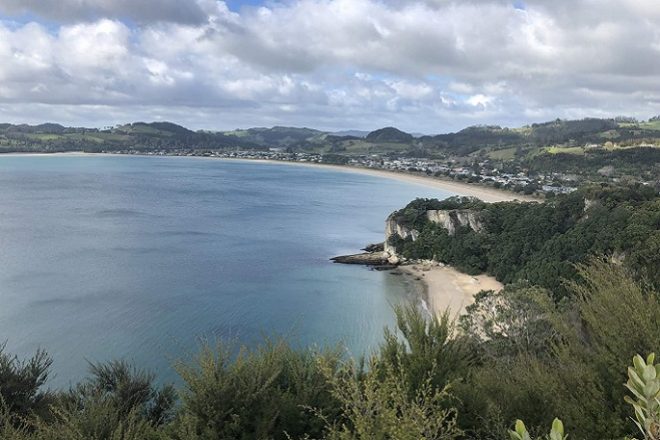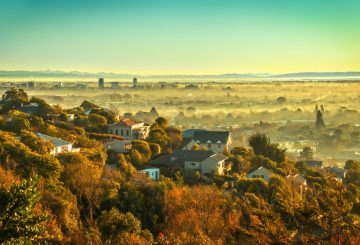Nagsimula na ang trabaho sa mga konsepto ng disenyo upang protektahan ang Thames mula sa pagbaha at pagtaas ng bagyo na dulot ng pagtaas ng antas ng dag Ang proyekto ay sinimulan matapos ipakita ng mga pag-aaral na ang $1 bilyong halaga ng mga asset ay maaaring nasa panganib sa paglipas ng panahon. Sumang-ayon ang komunidad na ang proteksyon ay ang pinakamahusay na paraan upang umangkop sa banta na ito.
Ang proyekto, na tumagal ng tatlong taon, ay pinag-aralan ang mga panganib sa buong baybayin ng Coromandel. Ang mga aksyon upang pamahalaan ang mga panganib na ito ay na-ranggo na ngayon, na may pangunahing priyoridad ang proteksyon ng Thames. Isang pangkat ng pamamahala, na binubuo ng mga kinatawan mula sa aming Konseho, Ngāti Maru at Waikato Regional Council, ang nabuo upang pangasiwaan ang gawaing proteksyon para sa Thames.
Sinabi ng Mayor ng Konseho ng Distrito ng Thames-Coromandel na si Len Salt, na namumuno sa pangkat ng pamamahala, “Partikular na mahina ang Thames sa pagtaas ng bagyo at pagbaha dahil sa pagtaas ng antas ng dagat, na naglalagay ng halos $1 bilyong mga asset sa ating bayan sa panganib. Ang Thames ay ang sentro ng ekonomiya ng aming distrito, na nagbibigay ng karamihan sa mga serbisyo ng Coromandel, industriya ng dagat, pangangalagang pangangalaga at imprastraktura ng negosyo. Responsibilidad namin na tiyakin na ang Thames ay matatag at maaaring umunlad para sa mga hinaharap na henerasyon.”
Babubuo na ngayon ang Royal HaskoningDHV ng mga nakatagong pagpipilian sa disenyo upang maprotektahan ang bayan mula sa pagbaha sa baybayin para sa isang 1% na bagyo ng AEP sa susunod na 100 taon. Ang isang naunang pag-aaral ay nagpakita na ang pangunahing hamon sa pagprotekta sa Thames ay ang gastos at sukat ng anumang mga istruktura na nagtatanggol, dahil maraming mga lugar ang mababang nakalagay.
Kasama sa gawaing disenyo ang buong hydrodynamic na pagmodelo at pinagsamang pagsusuri ng probabilidad ng mga kasinsidenteng kaganapan ng pagbaha sa baybayin Binibigyang diin ng pangkat ng pamamahala ang kahalagahan ng anumang istraktura ng proteksyon na kumonekta sa iba pang mga gawain sa pamamahala ng
Ang pagpopondo para sa gawaing disenyo at konsultasyon sa komunidad sa mga pagpipilian sa disenyo ay inilaan sa pamamagitan ng 2023-2024 Long Term Plan. Gayunpaman, ang pagpopondo para sa pagtatayo ng proteksyon ay hindi pa natutukoy. Sinabi ni Mayor Len Salt, “Haharapin namin ang ilang malalaking gastos, ngunit kailangan nating timbangin ang mga ito laban sa halaga ng kung ano ang nasa panganib. Hinaharap namin ang mga hamon na ito nang direkta at ginagawa ang kinakailangang, makabagong gawain, sa halip na umasa lamang na mawawala ang mga problema. Ito ay isang pangmatagalang pangitain at plano ng pagkilos.”
Ang konsultasyon sa publiko sa mga konsepto ng disenyo ay inaasahan sa Mayo. Para sa karagdagang impormasyon, bisitahin ang web page ng proyekto ng Shoreline Management Pathways ng konseho.





























































